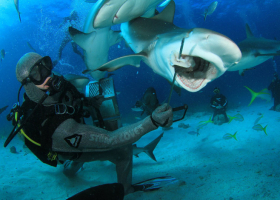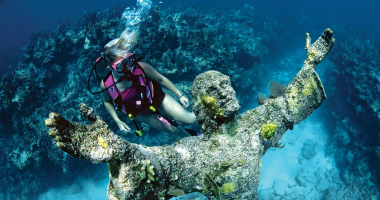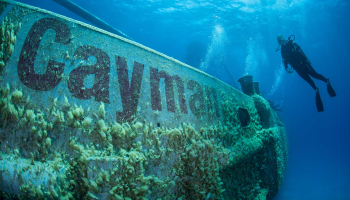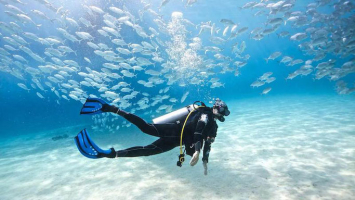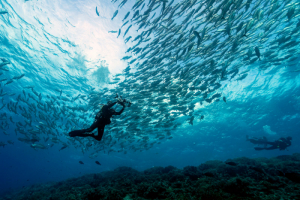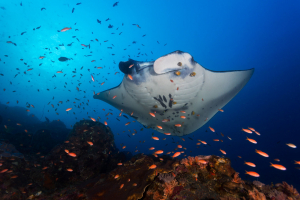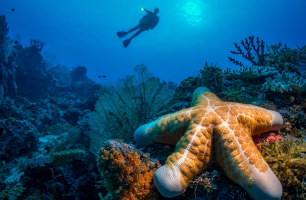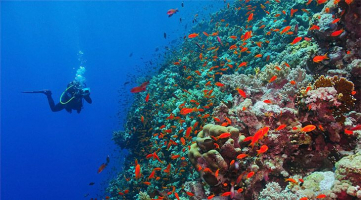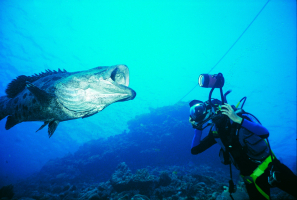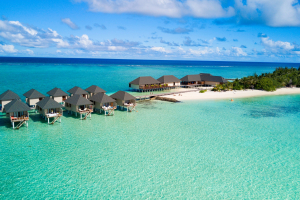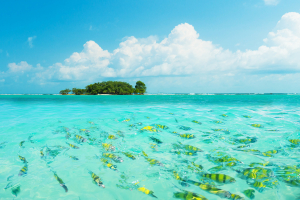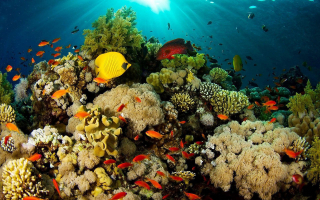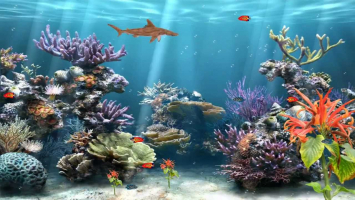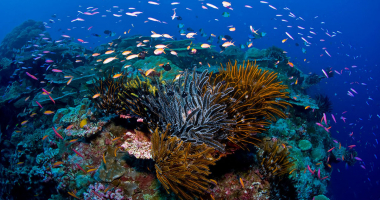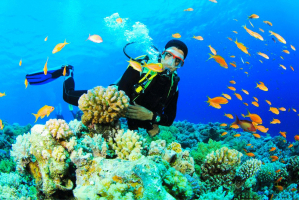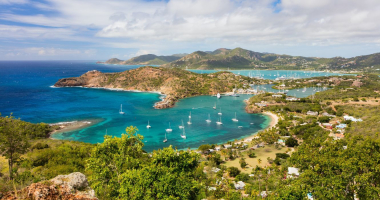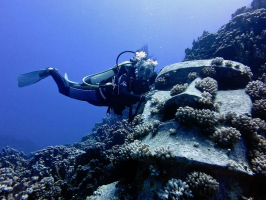Top 10 Dive Sites in the Maldives
The Maldives is a scuba diver's dream, with warm, crystal blue waters, white-sand beaches, and island after island to find and explore. This Indian Ocean ... read more...archipelago nation is made up of 26 atolls and about 1200 islands, only around 200 of which are inhabited. A plethora of marine species awaits tourists beneath the blue water's surface. Whatever your diving love is, you're sure to find it here, from enormous pelagics like sharks and manta rays to small, hidden nudibranchs and crustaceans. Here are the top 10 best dive sites in the Maldives, hope you can enjoy them!
-
Maaya Thila's reputation is well-deserved since it is one of the most popular dives in the Maldives and frequently appears on global top-ten lists. The world-class pinnacle is alive with turtles, frogfish, and sharks. Combine jaw-dropping marine life with jaw-dropping geographical characteristics, and you have a good indication of what to anticipate. The reef itself is around 80m/252ft in circumference (small enough that divers may explore most of it in one dive, currents allowing) and begins at only 6m/20ft deep. The wall slopes down to around 30m/98ft depth, making it appropriate for both novice and expert divers.
Things to see: The white-tip reef sharks are the main attraction here. On a good day, up to 20 of these sharks might be found patrolling the reef. Grey reef sharks and the odd guitar shark are also seen circling the pinnacle in search of prey. Bring your camera since the caverns and overhangs on Maaya Thila are home to huge frogfish that may grow to be 30cm/11" long. Divers can also see Moorish idols, turtles, manta rays, triggerfish, barracuda, nudibranchs, and a variety of other sea creatures.
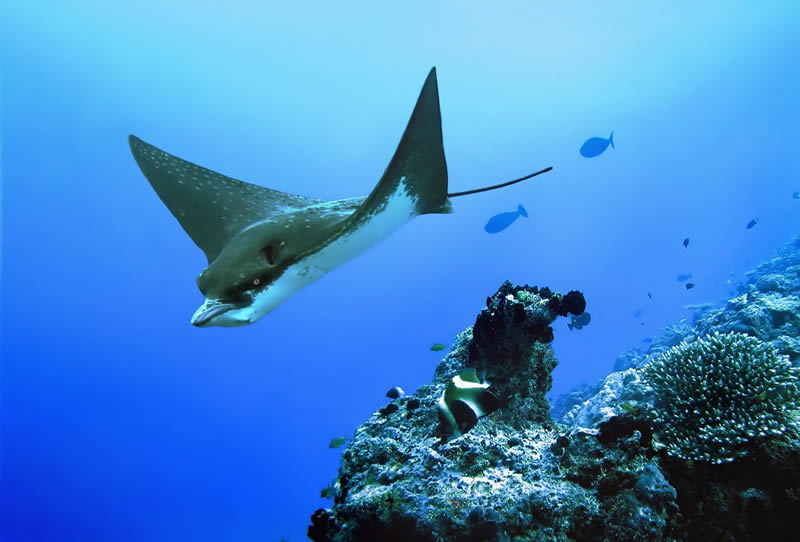
wernerlau.com 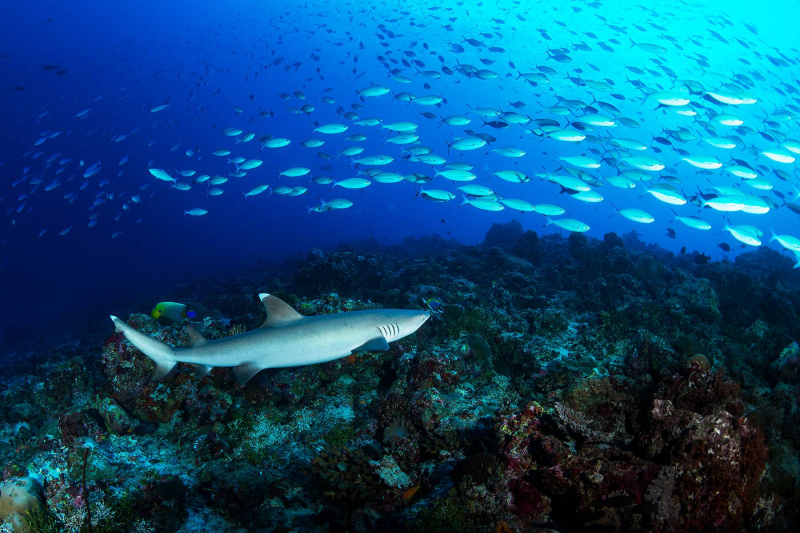
deepblu.com -
Cocoa Thila is located on the eastern side of South Male Atoll. This pinnacle reaches a height of 400m/1312ft and slopes down to a drop-off of 30m/98ft. Strong currents make this location more suitable for advanced and experienced divers, but they are also responsible for the diverse marine life seen here. Geographic features such as rugged overhangs, ravines, and fissures give a temporary reprieve from the current. Divers should maintain their gaze fixed on the blue, for there is where the magic happens.
Things to see: Pelagics thrive in currents, so look for schools of tuna and trevally in the deeper blue water. Eagle rays in formation and grey reef sharks are additional possibilities. Not to mention the occasional turtle. Rock cod, fusiliers, sweetlips, and snapper congregate in big groups closer to the reef, only breaking formation when divers go too close.
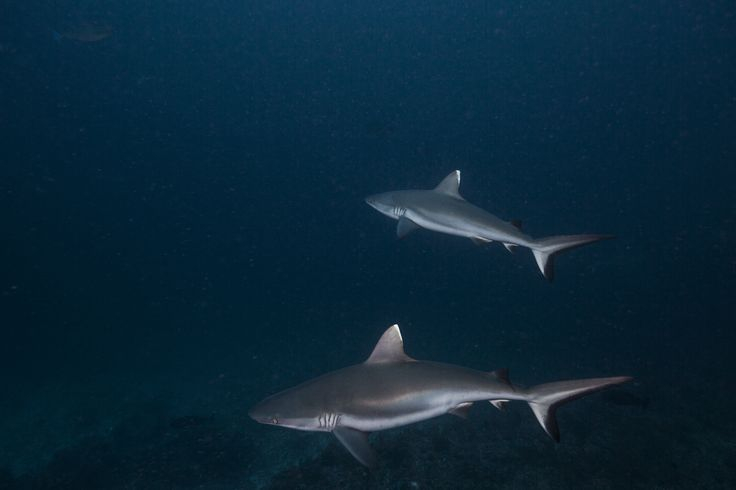
pinterest.com 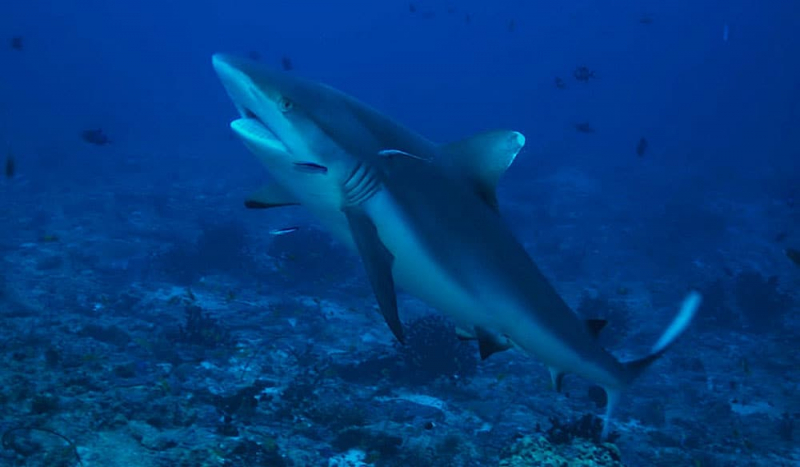
divein.com -
Alimatha Jetty, located in the Felidhu Atoll, is one of the best dive sites in the Maldives. A plethora of nurse sharks, rays, and schools of huge trevallies may be seen on the shallow reef. It is an excellent location for underwater photography and night dives. It has a maximum depth of 15 meters/50 feet and an average depth of 10 meters/30 feet, making it accessible to divers of all abilities. The current, though, maybe rather powerful here. This site in Vaavu Atoll, like Maaya Thila, is ideal for a night dive. Local marine life now congregates beneath the planks, looking for an easy meal, thanks to the Alimatha Resort kitchen's habit of washing fish on the jetty.
While the authenticity and eco-credentials of this must be questioned, it must be stated that being beneath the jetty at night is amazing. Our best advice is to try this dive during the offseason; during peak season, you'll encounter as many divers as fish and sharks. This is a shallow dive with a maximum depth of 15m/49ft, making it suited for adventurous novices.
Things to see: Nurse sharks, gigantic trevallies, and marble rays whip themselves into a feeding frenzy as they glide around and between divers. Because of their eagerness, the animals sometimes accidentally bump divers.
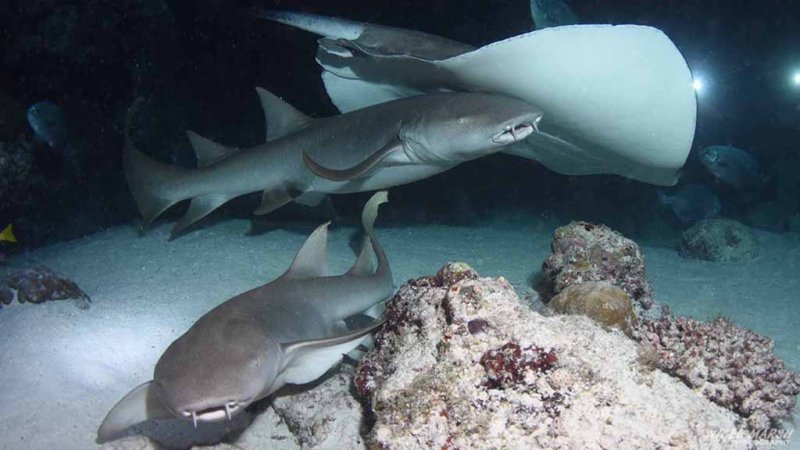
diveplant.com 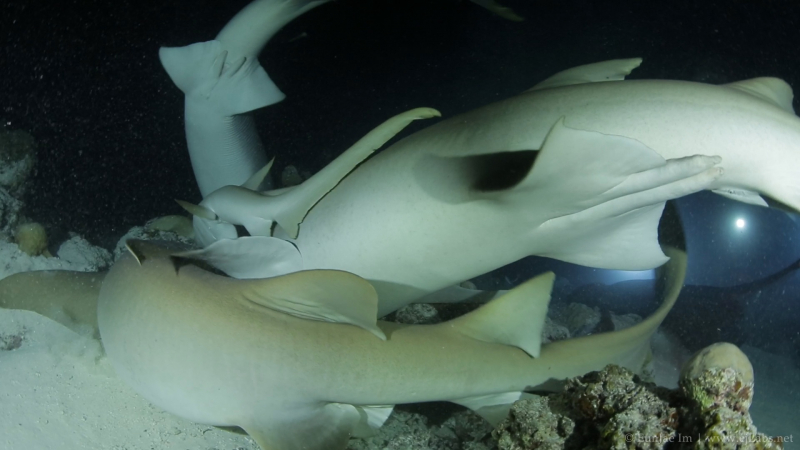
ejlab.net -
When it comes to the best dive sites in the Maldives, professional divers always mention Kandooma Thila. This hidden island, which is around 300m/985ft long and 12m/40ft below the surface, may require many journeys to properly investigate. Most dive shops and liveaboards concentrate their efforts on the north and west walls. Divers may visit Jack's Corner, a popular cave at 24m/78ft carpeted with soft corals. Exploring the rocky rocks off the main island is also noteworthy since many green sea turtles come here to rest or eat. Because the currents can be severe, this site is best suited for expert and experienced divers.
Things to see: Aside from the green sea turtles, the current, which is partly due to the island's location at the mouth of a channel, attracts a variety of bigger marine species. You may anticipate a few sharks, possibly a manta or two in the blue, and eagle rays at this spot, as at many others in the Maldives. The coral in this area is amazing, and it needs to be given as much attention as the aquatic life. Macro photographers who seek refuge from the current at the cave entrance should keep an eye out for soft corals, which hide a variety of species.
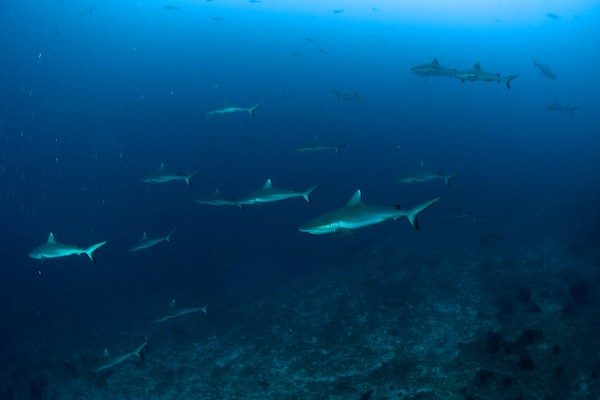
tribloo.com 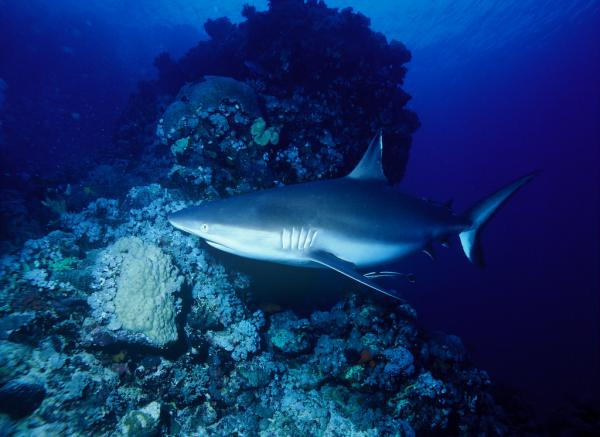
divescover.com -
Banana Reef on North Male Atoll is the Maldives dive in many respects. It was one of the first places to draw visitors and divers from all over the globe, and it gives a taste of everything that makes diving in the Maldives so special: corals, caverns, huge fish, and overhangs.
The divers like Banana Reef because it's easy to get to; even snorkelers can get their fins wet at this rather protected location. The reef begins at 5m/16ft and declines to a maximum depth of 35m/114ft. Divers will encounter deep holes, fissures, and great coral cover along the sloping sides.
Things to see: All of the hiding places on the reef are ideal for moray eels, whereas sharks and groupers like to hang out in the blue near the reef. Jacks swarm, and snapper and wrasse dart in and out of the corals. Napoleons are very regularly observed here. People are another item you may expect to see on Banana. The same factor that makes this spot so popular with day-trippers, divers, and snorkelers is its accessibility.
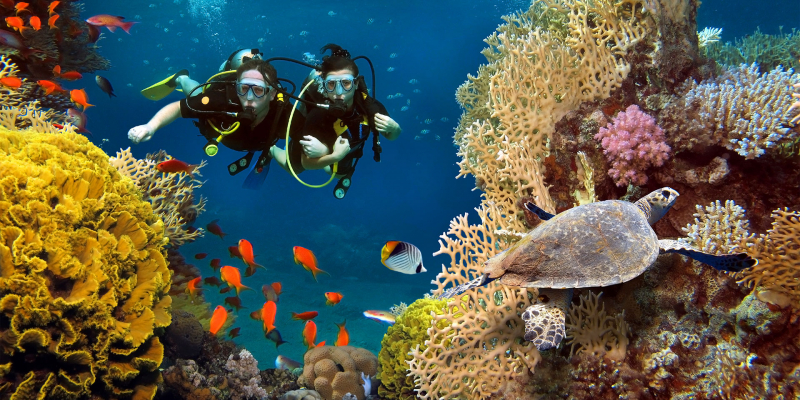
crystal-magazine.com 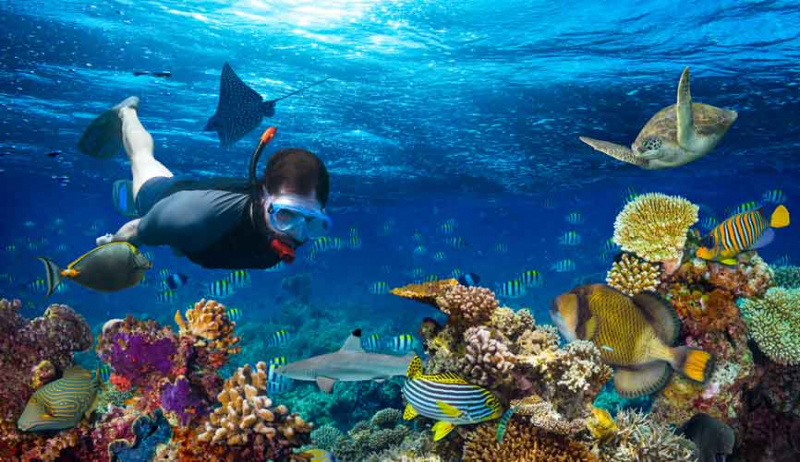
sharpsholiday.in -
Fish Head, also known as Shark Point and Mushimasmingili Thila, is widely regarded as one of the Maldives' top shark dives. It's also one of those "bucket-list" dives that many scuba divers want to do.
Although this pinnacle is modest, reaching a depth of just 36m/118ft, the cliffs are covered with corals and include enough overhangs and caves to merit many dives. Because the sharks were formerly fed here (a happily no longer practiced habit), up to 20 grey reef sharks patrol the reef at any given time. Divers may observe these organisms up close and personal by diving with a fish head.
Things to see: Aside from sharks, Fish Head is teeming with marine life, including schools fusiliers, trevally, barracuda, and massive Napoleon wrasse. Sea fans and black corals will delight coral enthusiasts, while those hunting for Nemo will delight in the anemone city at the top of the reef.
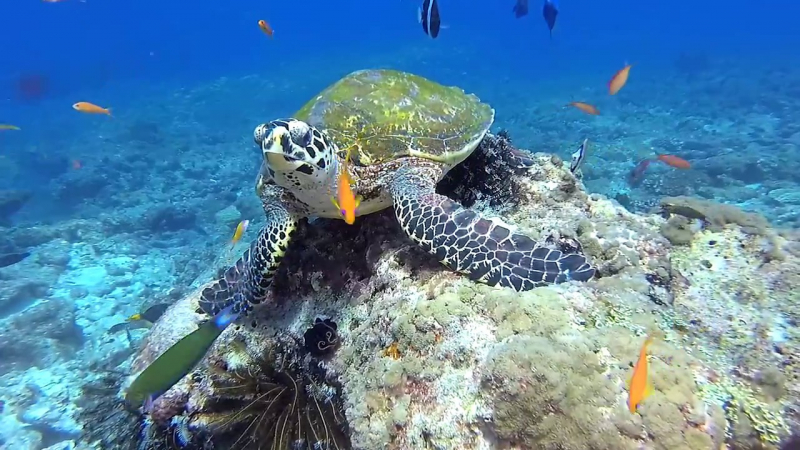
youtube.com 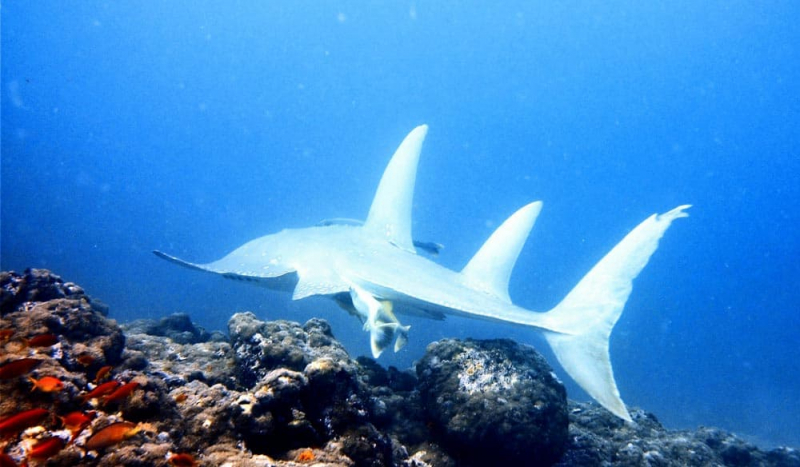
divein.com -
Hammerhead Point, also known as Rasdhoo Madivaru, is a challenging dive on an outer reef frequented by hammerhead sharks, manta rays, and other large pelagics. Outside of this reef, the depth decreases fast to more than 200m, and the water is very clear. Hammerhead dives often begin before sunrise and descend by 6 a.m. for the highest possibility of sightings.
For experienced divers, this challenging dive offers the opportunity to swim alongside dozens of schooling hammerhead sharks. Scalloped hammerheads, unlike their bigger, solitary siblings, congregate in the Maldives' seas. The outer reef is located on Rasdhoo Atoll, and the pristine waters plunge to around 200m/650ft. Divers prepared to brave the currents here will be in a prime position to witness any passing pelagic life. This dive is usually done early in the morning for the best possibility of encountering sharks.
Things to see: The major draw here is the schooling of scalloped hammerheads, although manta rays, grey reef sharks, and giant trevally may also be seen.
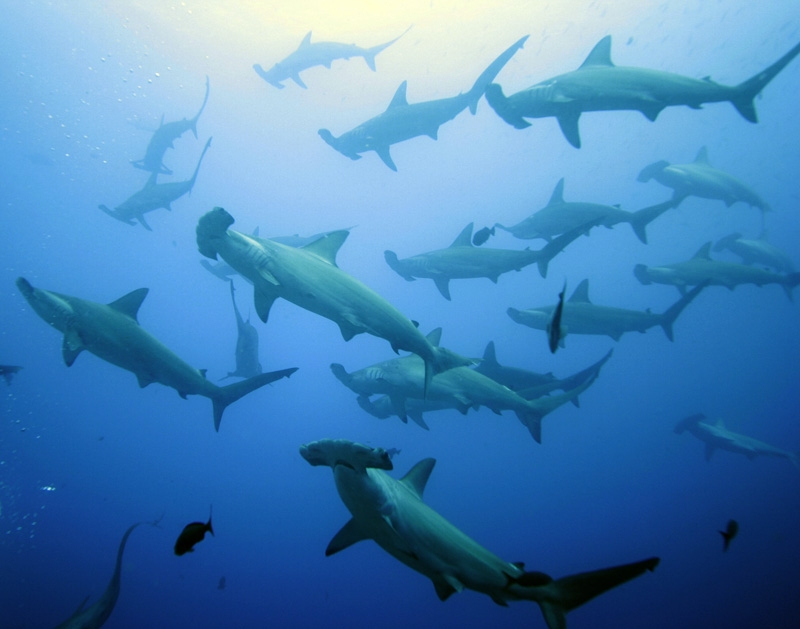
rasdhoodivers.com 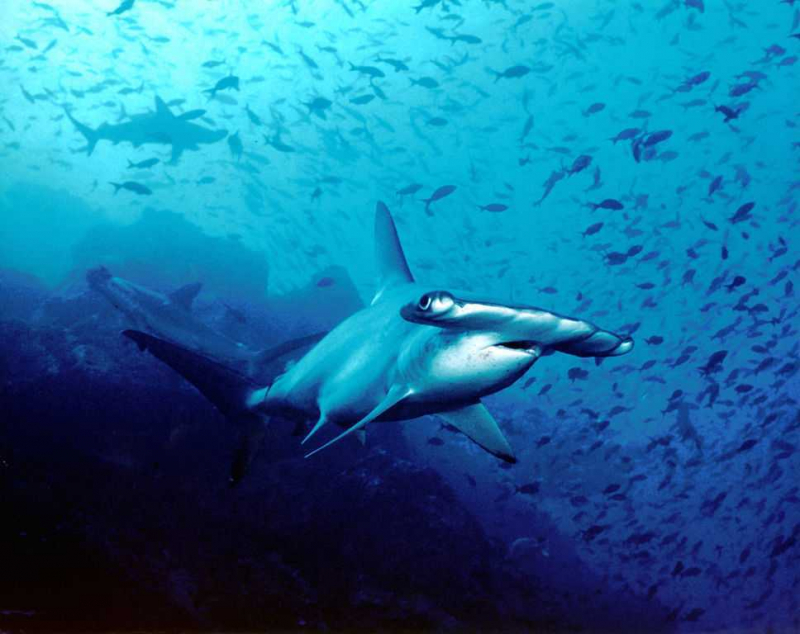
bolidify.com -
"The Bathala Maaga Khan Thila diving portion is approximately 300 meters long and 20 meters broad, with depths ranging from 4 to 30 meters." The top of the reef is flat, with a drop-off on each side, with the drop-off on the ocean side being steeper. The visibility and current are the most important factors in determining the quality of the dive. When vision is frequently between 30 and 40 meters. It's an incredible dive. At depths ranging from 4 to 12 meters, the coral is extremely excellent on the reef top. Small intriguing caves between 25 and 30 meters deep may be found on the inner edge of the reef.
This long yet narrow underwater island in the heart of Ari Atoll is a must-see for macro photographers. It's also an excellent dive for spotting gigantic trevally and jacks hunting and relaxing in the current.
The currents may be strong, especially during tide changes, but this attracts the large school of fusiliers who call this location home. But it's the tiny stuff that draws divers to Bathala.
Things to see: Nudibranchs, flatworms, slugs, sea hares, shrimp, and other macro creatures mean macro enthusiasts will be in their element. Rare and elusive leaf fish may also be discovered on the north bank, lurking 15 to 20 meters deep.
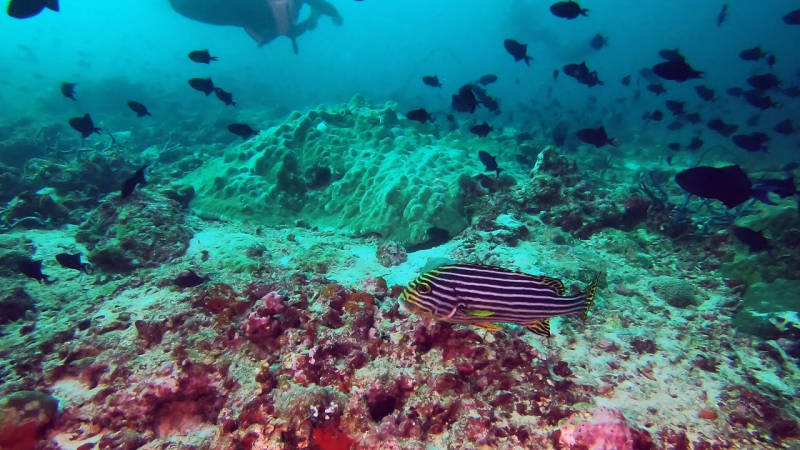
youtube.com 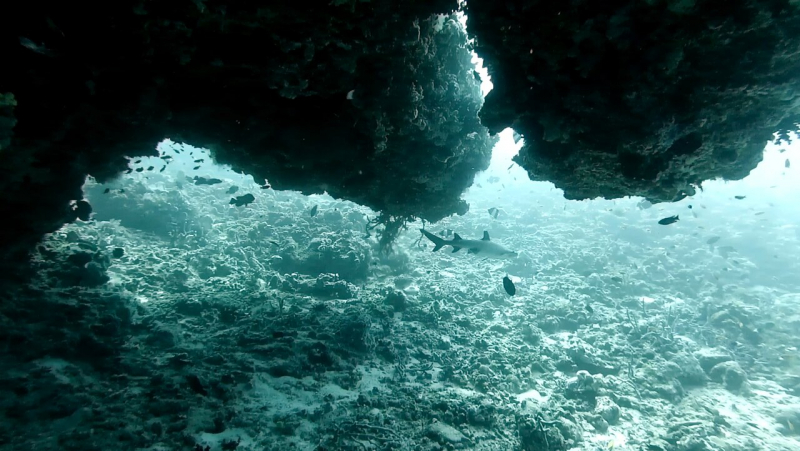
tripadvisor.co.nz -
Manta Point is not on any best-of-the-Maldives list (not to be confused with Manta Point in Nusa Penida, Indonesia). Divers from all over the globe come to view the gentle giants at this famed manta cleaning station. The reef itself is also wonderful, so there is something for everyone. Manta Point is one of the best dive sites in the Maldives.
The native name is Emas Thila, and the rays cluster around 15 to 30 meters (49-98ft) on the northwest side of the submerged island during the northeast monsoon season. The gently sloping reef gives up to a dramatic drop-off, although the action is at roughly 20m/65ft. Crevices, tunnels, and caverns in the reef hide a plethora of marine life.
Things to see: Divers can also see vivid soft corals, sea whips, dog-tooth tuna, Napoleon wrasse, sharks, and trevally in addition to mantas. On the reef, look for schools of sweetlips, red bass, masked bannerfish, and emperor fish. The odd turtle saunters by as well.
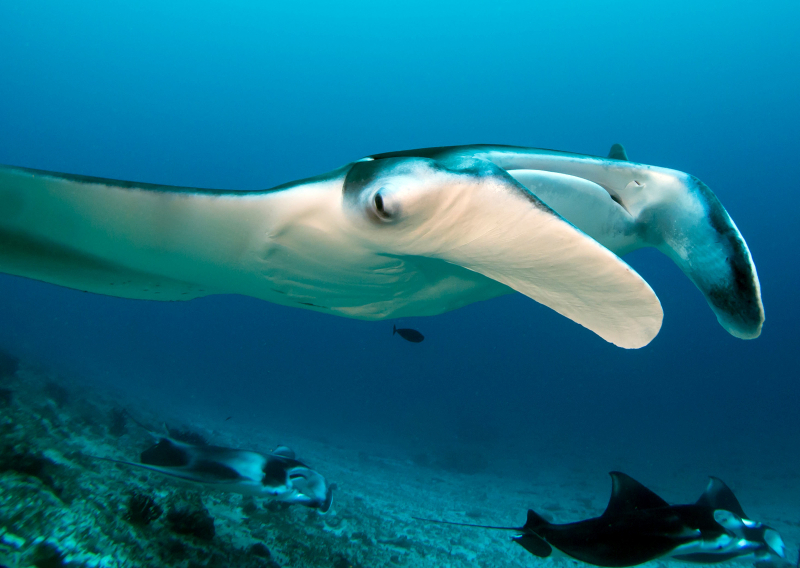
scubadiverlife.com 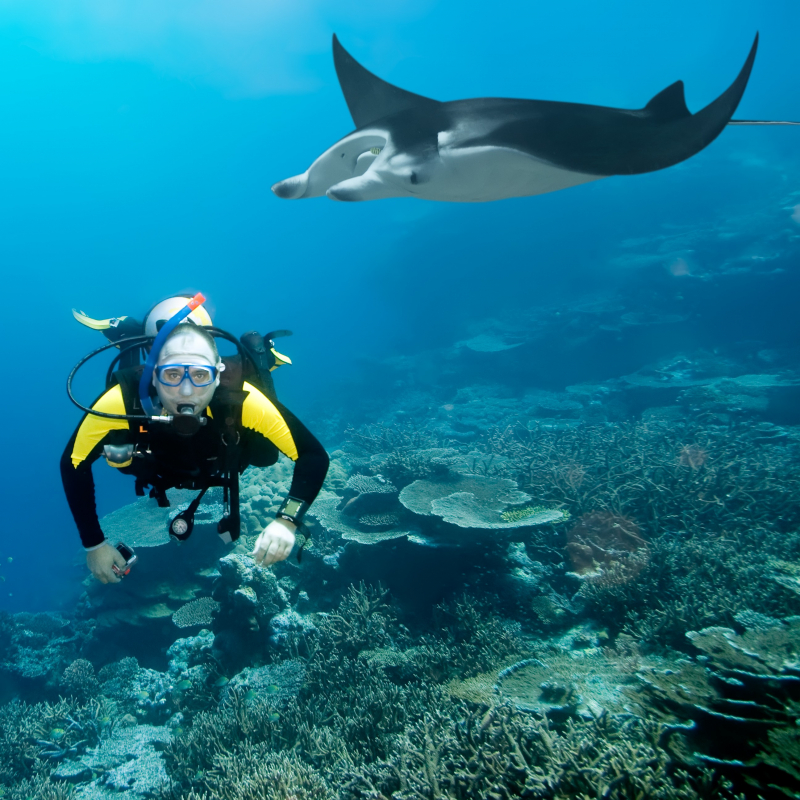
arrivalguides.com -
One of the best dive sites in the Maldives is Kuda Giri Wreck. While the Maldives is primarily renowned for their vast pelagic life and the abundance of whale sharks and manta rays, there are a few wrecks here as well. Investigate the undamaged remains of a mystery cargo ship as well as a tiny pinnacle.
With the bow at 18m and the stern at 30m, the hull is heading towards the reef. The hull is roughly 30m long and has a cargo hold in the back. The cargo area is tiny and gloomy, so bring a torch if you wish to see inside. The ship's exterior is covered with corals, algae, and sponges, and the deck is home to colorful sea squirts and small fish, as well as the strange grey frogfish. Swim across to the pinnacle after investigating the wreck and exploring its minor overhangs and tunnels. There are several frogfish, leaffish, and Maldivian clownfish that can be found.Things to see: On the decks, there's a carpet made of multicolored sponges and sea squirts. Smaller animals include glassfish, gobies, batfish, and frogfish, as well as turtles and humphead wrasse. The nearby pinnacle is frequently home to octopuses and other sea creatures.
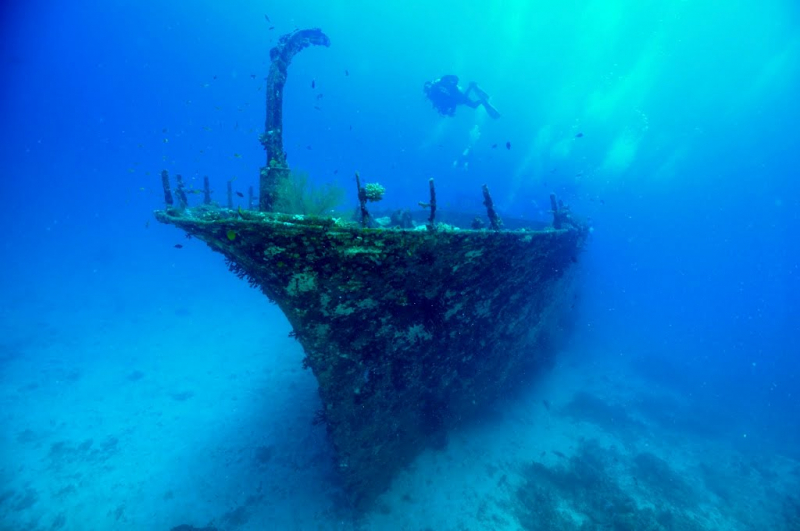
mapio.net












